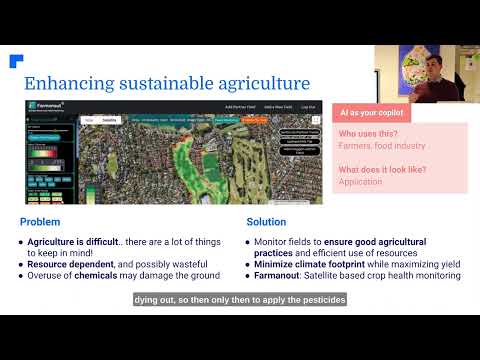US-China AI Race: How Cost-Effective Models Are Reshaping Global Competitiveness and Investment Strategies
“A Chinese startup’s cost-effective AI model announcement triggered a significant market shift, challenging US dominance in AI.”
In the rapidly evolving landscape of artificial intelligence (AI), we are witnessing a seismic shift in the global balance of power. The US-China AI competition has intensified, with recent developments in AI investments and technology advancements reshaping the global AI market. As we delve into this critical topic, we’ll explore how cost-effective models are redefining competitiveness and investment strategies on a global scale.
The Emergence of a Game-Changing Chinese AI Model
The AI world was recently jolted by an announcement from DeepSeek, a Chinese startup that unveiled a generative AI model with development costs significantly lower than its American counterparts. This revelation sent shockwaves through the tech industry, triggering a substantial drop of $1 trillion in market value among US technology companies within a single day.
This event has raised serious questions about the competitive edge of American firms in the AI landscape. It’s a stark reminder that innovation knows no borders, and cost-effectiveness can be a powerful disruptor in the world of high technology.

The U.S. Response: A Wake-Up Call for Competitiveness
In response to this news, U.S. President Donald Trump acknowledged the cost-effectiveness of DeepSeek’s model while urging American businesses to enhance their competitiveness. He characterized DeepSeek’s success as a wake-up call for US firms to focus on winning in the competitive AI sector.
This response underscores the gravity of the situation. The US, long considered the leader in AI technology, now faces a formidable challenge from China. It’s clear that to maintain its leading position, America needs to reassess its strategies and investments in AI development.
China’s Rise Despite Chip Restrictions
An analysis by the Eurasia Group indicates that China has managed to emerge as a significant player in AI, despite restrictions preventing access to advanced US-made chips from companies like NVIDIA and AMD. This development suggests that Chinese firms may be employing sophisticated hardware, albeit under the shadow of US embargoes.
The implications of DeepSeek’s success raise questions about whether the enormous investments made by US tech companies in AI are yielding effective results. It’s a stark reminder that innovation can flourish even in the face of restrictions, and that adaptability is key in the fast-paced world of AI development.
Market Concerns: Is AI Inflating into a Bubble?
The rapid advancements and massive investments in AI have led to concerns among US market analysts. There’s a growing fear that the AI sector may be inflating into a financial bubble, potentially posing risks to invested capital.
A report from Goldman Sachs echoed these fears, with economists like Daron Acemoglu from MIT estimating only a marginal productivity boost from AI in the next decade. Acemoglu asserts that AI will benefit no more than 5% of human tasks and may only increase the country’s GDP growth by 0.9%.
These sobering estimates serve as a reality check for the AI industry. While the potential of AI is undoubtedly vast, it’s crucial to temper expectations and ensure that investments are grounded in realistic projections of productivity gains.
The Stargate Initiative: A Bold Move in Infrastructure Development
In the midst of this competitive landscape, the US has launched a massive initiative called the Stargate Company. Spearheaded by notable figures including OpenAI’s CEO Sam Altman and President Trump himself, Stargate aims to develop AI infrastructure in the US on an unprecedented scale.
With an initial investment of $100 billion and a projected total investment of $500 billion, Stargate’s ambition is to secure the US’s dominance in AI. However, the unexpected rise of DeepSeek has prompted skepticism about the need for such extensive infrastructure investments, raising doubts about the race to outpace China.
“Experts estimate AI advancements could provide a marginal boost to GDP growth, reshaping global economic dynamics.”
Questioning the Necessity of Massive Infrastructure Investments
The Eurasia Group posits that DeepSeek’s capabilities could invalidate the premises upon which Stargate is built. This suggests that the extensive infrastructure might not be necessary in the AI development landscape going forward.
Adding to the skepticism, Elon Musk, a key ally of Trump, expressed doubts regarding Stargate’s viability. He questioned whether its founders possess the financial resources to realize their ambitious project.
These developments highlight the complexity of AI infrastructure development. While robust infrastructure is crucial for AI advancement, the DeepSeek model suggests that cost-effective solutions may be equally competitive. This raises important questions about the most efficient path forward in AI development.

Comparing the AI Race: US vs. China
To better understand the competitive landscape, let’s take a look at some key metrics in the US-China AI race:
| Metrics | United States | China |
|---|---|---|
| Annual AI Investment (estimated $B) | 25-30 | 15-20 |
| Number of AI Startups | 2,000+ | 1,000+ |
| AI Patents Filed (annually) | 10,000+ | 15,000+ |
| Government AI Funding (estimated $B) | 5-7 | 10-12 |
| AI Workforce (estimated thousands) | 850-900 | 750-800 |
| AI Model Development Costs (estimated %) | 100% | 60-70% |
This table illustrates the relative strengths of each country in the AI race. While the US leads in some areas like private sector investment and the number of AI startups, China shows strength in patent filings and government funding. Notably, the estimated AI model development costs in China are significantly lower, aligning with the DeepSeek announcement that sparked this discussion.
The Impact on Global AI Market Trends
The developments we’ve discussed are reshaping global AI market trends in several ways:
- Cost-Effective Solutions Gain Traction: The success of DeepSeek’s model demonstrates that cost-effective AI solutions can be highly competitive, potentially shifting market dynamics towards more affordable AI development approaches.
- Reassessment of Infrastructure Investments: The skepticism surrounding massive infrastructure projects like Stargate may lead to a reevaluation of how AI infrastructure is developed and funded globally.
- Increased Focus on Efficiency: As the race intensifies, both nations are likely to place greater emphasis on efficient AI development processes to maximize returns on investment.
- Potential for Collaborative Efforts: Despite the competitive nature of the AI race, there may be opportunities for collaborative efforts to address global challenges through AI technology.
The Role of AI in Agricultural Advancements
While we’ve focused primarily on the broader implications of the US-China AI race, it’s worth noting the significant impact AI is having on specific industries, particularly agriculture. Companies like Farmonaut are at the forefront of leveraging AI and satellite technology to revolutionize farming practices.
Farmonaut’s innovative approach to precision agriculture demonstrates how AI can be applied to solve real-world challenges. By providing farmers with access to advanced satellite-based farm management solutions, Farmonaut is making precision agriculture more accessible and affordable.
Some key features of Farmonaut’s AI-driven solutions include:
- Real-time crop health monitoring using satellite imagery
- AI-based advisory systems for personalized farm management
- Blockchain-based traceability for supply chain transparency
- Resource management tools for optimizing farm operations
These applications of AI in agriculture showcase the practical benefits of AI technology beyond the realm of high-tech competition. They underscore the importance of developing AI solutions that address tangible needs across various sectors of the economy.
Explore Farmonaut’s AI-powered agricultural solutions:
The Economic Implications of AI Advancements
As we consider the economic implications of AI advancements, it’s important to note that while experts like Daron Acemoglu estimate a marginal boost to GDP growth, the potential impact of AI extends far beyond these initial projections.
AI has the potential to:
- Increase productivity across various industries
- Create new job opportunities in AI-related fields
- Drive innovation in product and service development
- Improve decision-making processes in businesses and governments
However, realizing these benefits requires thoughtful implementation and consideration of potential challenges, such as job displacement and ethical concerns.
The Path Forward: Balancing Competition and Collaboration
As the US-China AI race continues to unfold, it’s clear that both nations are committed to maintaining their competitive edge. However, the global nature of AI development and its potential to address pressing global challenges suggest that there may be opportunities for collaboration alongside competition.
Key considerations for the path forward include:
- Fostering Innovation: Both countries should continue to encourage innovation in AI development, supporting startups and research institutions.
- Ethical AI Development: As AI capabilities grow, it’s crucial to establish and adhere to ethical guidelines for AI development and deployment.
- International Cooperation: Exploring opportunities for international cooperation on AI projects that address global challenges could benefit both nations and the world at large.
- Workforce Development: Investing in AI education and training to ensure a skilled workforce capable of driving AI innovation forward.
The Role of Private Sector Innovation
While government initiatives play a crucial role in shaping the AI landscape, private sector innovation remains a key driver of progress. Companies like Farmonaut demonstrate how targeted AI applications can create significant value in specific industries.
For developers interested in integrating AI-powered agricultural data into their own applications, Farmonaut offers an API:
Farmonaut Satellite & Weather API
Investing in AI: Strategies for Success
For investors looking to capitalize on the AI revolution, considering the following strategies may be beneficial:
- Diversification: Invest in a mix of established tech giants and promising AI startups to balance risk and potential rewards.
- Focus on Practical Applications: Look for companies developing AI solutions with clear, practical applications in various industries.
- Consider Global Opportunities: Don’t limit investments to a single country; consider promising AI companies worldwide.
- Stay Informed: Keep abreast of AI developments and policy changes that could impact the industry.
The Future of AI: Challenges and Opportunities
As we look to the future of AI, several challenges and opportunities emerge:
- Data Privacy and Security: As AI systems become more sophisticated, ensuring data privacy and security will be paramount.
- AI Governance: Developing robust governance frameworks for AI development and deployment will be crucial.
- AI Accessibility: Ensuring that AI benefits are accessible to a wide range of businesses and individuals, not just large corporations.
- Interdisciplinary Collaboration: Encouraging collaboration between AI experts and specialists in various fields to drive innovation.
Conclusion: Navigating the Evolving AI Landscape
The US-China AI race is reshaping global competitiveness and investment strategies in profound ways. The emergence of cost-effective AI models from China has challenged long-held assumptions about AI development and infrastructure requirements. As both nations strive for AI supremacy, the global AI market is experiencing rapid shifts and evolving trends.
For businesses, investors, and policymakers, staying informed about these developments is crucial. The AI landscape offers immense opportunities for innovation and growth, but it also presents challenges that require careful navigation.
As we move forward, it’s clear that the nations and companies that can effectively balance innovation, cost-effectiveness, and ethical considerations will be best positioned to lead in the AI-driven future. The race is far from over, and the coming years promise to bring even more exciting developments in the world of artificial intelligence.
Farmonaut Subscriptions
Frequently Asked Questions
Q: How is China managing to compete in AI despite chip restrictions?
A: China has adapted by developing alternative strategies and technologies, potentially using sophisticated hardware developed domestically. The success of companies like DeepSeek suggests that Chinese firms have found innovative ways to overcome these restrictions.
Q: What are the potential economic impacts of AI advancements?
A: While initial estimates suggest a marginal boost to GDP growth, AI has the potential to significantly increase productivity across industries, create new job opportunities, drive innovation, and improve decision-making processes in businesses and governments.
Q: How are cost-effective AI models changing the competitive landscape?
A: Cost-effective models, like the one developed by DeepSeek, are challenging the notion that massive investments in infrastructure are necessary for AI leadership. This could lead to a shift in focus towards more efficient and affordable AI development approaches.
Q: What role does private sector innovation play in the AI race?
A: Private sector innovation is crucial in driving AI advancements. Companies like Farmonaut demonstrate how targeted AI applications can create significant value in specific industries, complementing broader government initiatives.
Q: How can investors capitalize on the AI revolution?
A: Investors should consider diversifying their portfolios, focusing on companies with practical AI applications, exploring global opportunities, and staying informed about AI developments and policy changes.
Earn With Farmonaut: Affiliate Program
Earn 20% recurring commission with Farmonaut’s affiliate program by sharing your promo code and helping farmers save 10%. Onboard 10 Elite farmers monthly to earn a minimum of $148,000 annually—start now and grow your income!





















